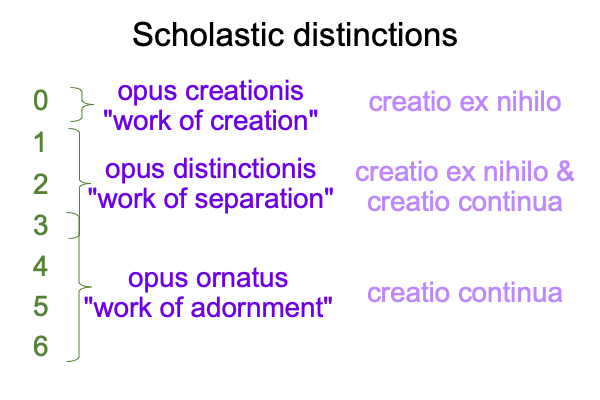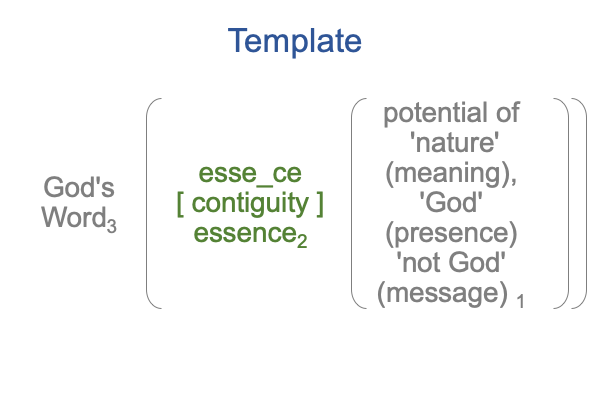0755 Section 4.5 is the first plate in Tabaczek’s banquet.
From the salad course, I appreciate the meaning, presence and message underlying the Latin terms, creatio ex nihilo and creatio continua.
0756 How do these definitions apply to the six days in Genesis 1?
First, I should ask, “What distinctions does Aquinas apply to the Creation Story?”
Aquinas comes up with a three-fold distinction.
In the following figure, the column on the left corresponds to Genesis “days”. The center column presents Aquinas’s distinctions. The column on the right shows the corresponding substantial terms.

0760 Now, there are six days. Let me go through each according to the following template.

For Augustine’s term, rationes seminales, esse_ce associates to seminales (seed) and essence associates to rationes(principle).
0761 The six days of creation are covered previously in the section titled, “Hegel’s Intersection and The Creation Story” (points 0426-0491).
While Tabaczek describes the technical details of scholastic terminology. The use of rationes seminales2 as an actuality2, supports a sequence of portrayals of day:age associations, in the normal context where God’s Word3 serves as a definition3 operating on the following potential1. The meaning1 is that God creates out of no thing. The presence1testifies to God. The message1 is that nature is not God.
